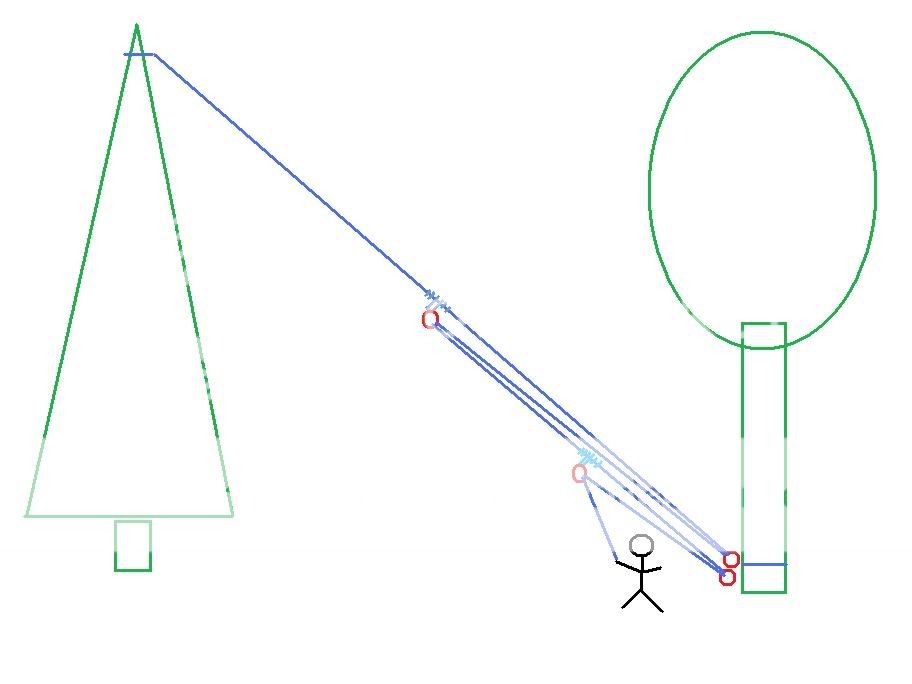This is nice. The original zRig 3:1 should be discernible. If all red rings are pulleys, we have a 9:1. If the lowest red ring(at base of tree) is an anchor, it is 6:1 (a 2:1 piggybacked on a 3:1 for a 6:1). The difference is the flow of force would stop at the anchor for 6:1, but it continues and is 'conserved' in a more 'closed'/ less leakage system with the last ring as a pulley, so the 1x that would normally just pull on the anchor races around and pulls on the 3:1/zRig 1x as the pulley closest to hand pull is pulling on the 3:1/zRig 2x. See at what points the fores multiply,a nd at what points they are additive, how more 'closed' has less 'leakage'.
If we lean hard into the 9:1 configuration with all body weight on pull rope as hard as possible, we have 9xBodyweight factor. But, if we then reach down and pull on ground handle/ stump whatever we have 9xBodyWegiht + 9xEffort. But, if we pull on length of line coming out of lowest red ring/pulley, we add 3xEffort more, to finish(simply by 'closing the circuit' more, like when we jumped from 6:1 to 9:1). We can impact with bodyweight or effort easier, as the other value holds things at bay.
Or we can place a prussick on any leg of line pulling out of a pulley, so guys can take break, let it hold to impact suddenly (with both effort and bodyweight factors, instead of just one or the other like in previous paragraph), wait for perfect facing etc. Also, so the legs of tensioned line are locked, and you can leverage their resistance to bend by sideways force for highest returns. Pulling out of the pulley closest to hand pull is best in 9:1 configuration, because of less tension on the prussick to hold more confidentally. But, because you lose the leg of line to the pulley that you pull on (prussick goes on opposite side of pulley), the prussick load is 1/8 load (instead of the 1/9th load that hand hold gets). So, whole system can stretch, and lose some bits of tension/'juice'.
Some fine points, but the same man on the same job leading the same crew, making these little , pivotal differences, can really make the difference in power and fatigue etc. Like getting a new Porty, you have to look for uses, to get good and quick deploymeant, to best know when and at what costs to draw them out.

























































